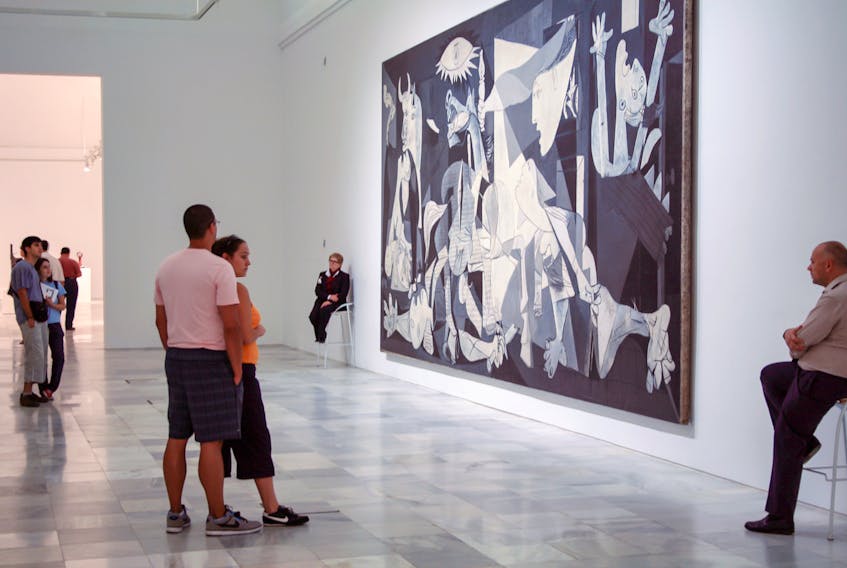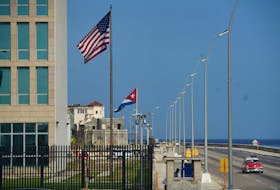In 2019, a Washington Post headline read: “In America, talk turns to something not spoken of for 150 years: Civil war.” Such talk about the United States of America being on the brink of civil war took on added significance after mobs stormed the Capitol in Washington, D.C., on Jan. 6.
The thought that conflict similar to the U.S. civil war (1861-1865) might break out understandably troubles countless Americans. Yet, history tells us that the template for civil war that most closely resembles U.S. events is actually the Spanish Civil War from 1936 to 1939.
As in America in 2021, Spain’s growing political polarization in 1936 left little common ground. As historian Hugh Thomas wrote, by 1936, “it would have required a superhuman effort to avoid the culminating disaster of civil war.” To Thomas, “any desire for moderation on the part of one group was extinguished by a renewed violence on the part of the other.”
Over the years, the Spanish Civil War has been encrusted in myth and legends. The bloody war that cost hundreds of thousands of lives started in July 1936 when the Spanish general Francisco Franco led a military rebellion that, with the help of Nazi Germany and Mussolini’s fascist Italy, ultimately overthrew the country’s republican government. Numerous historians have argued that the pro-government republican forces were engaged in a valiant struggle to defeat international “fascism.” Thousands of foreign volunteers journeyed to Spain to fight for the republicans, including 1,600 Canadians.
But the historical facts belie such an easy interpretation. Between 1931 and 1936, Spain’s politics was defined by a growing polarization between left and right, which often spilled over into violence. While rightist groups indulged in their own antics, revolutionaries in the cities and countryside formed their own militias, confiscated land, assassinated adversaries, murdered priests, burned churches and schools, and launched illegal strikes which shut down vital industries.
In 1934 a revolutionary strike movement in parts of Spain tried unsuccessfully to topple the centrist government. It was followed by savage governmental retaliation.
This leftist radicalization was embodied in the small but vocal parties of Syndicalists, Anarchists, Communists and Socialists. The communists were under strict orders from Josef Stalin in Moscow. The Socialists adopted the salute with the clenched fist and bent arm as well as the communist red flag. Unlike other leftist political parties across Europe in the 1930s, the Socialists and their allies condemned electoral democracy.
By 1936, as historian Stanley Payne has written, the center of Spain’s political spectrum had ceased to exist. Normally moderate republicans were more afraid of the political right than they were of their revolutionary allies.
In February 1936, a weak, left-wing coalition government was formed, called the Popular Front, a name borrowed from communist terminology. Stanley Payne and other scholars have documented how the elections in February were marred by killings, mob violence and intimidation of local election officials. Ballots in many localities were almost certainly destroyed. Following the narrow electoral win, the new government set up an electoral commission which retroactively assigned more seats to the Popular Front.
Unsurprisingly, in the wake of the elections, as historian Thomas has written, “a trail of violence, murder and arson spread across the face of the country.” The greatest wave of strikes in Spanish history followed the elections, but this wasn’t labor activism designed to improve wages and working conditions. Its leaders openly called for a “dictatorship” of the working class.

Electoral democracy, Payne notes, had vanished well before the war actually started in summer, 1936. By that date, Franco and elements in the Spanish armed forces had begun mobilizing to overthrow a government that many Spaniards viewed as incapable of maintaining law and order in the country’s streets and countryside. Franco enjoyed broad support from landowners, industry, the nation’s Roman Catholics and Spaniards who hoped for a return of the monarchy.
Franco’s actions compelled the republicans to arm themselves. The stage was set for the violent struggle that only ended three years later when Franco’s forces captured the capital city of Madrid. By then at least half a million Spaniards had been killed in battle or had died from bombardment, assassination and execution. Killing continued after 1939 as Franco’s new regime brutally persecuted its wartime political opponents.
Is Joe Biden’s America headed in the same direction? Spain, beginning in the 1800s, had a history of civil war, unlike the USA in the 1900s. The U.S., despite recent events, does not have a political culture similarly marked by civil war.
But in the 2020s, America is in danger of rapidly using up that political capital. Will U.S. polarization continue to harden in 2021? The Spanish example is a warning of what happens when there is no middle ground.
Ian Dowbiggin teaches European history at UPEI. He is a fellow of the Royal Society of Canada.









